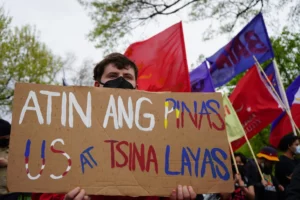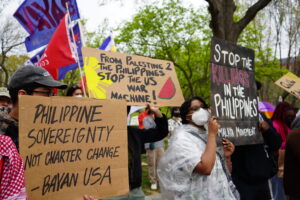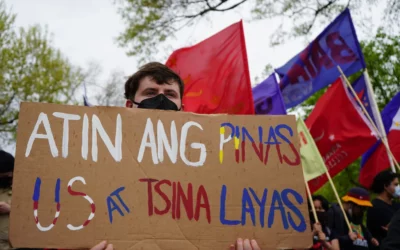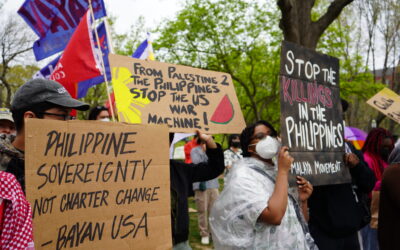Veteran journalist Inday Espina-Varona interviews Dr. Gene Nisperos of UP Manila and UP-PGH in the latest episode of ALAB Analysis.
The country’s COVID-19 cases skyrocketed in a matter of weeks, with the Philippines now among those with the highest number of cases in Southeast Asia.
Three months since the country reported its first case of coronavirus, the government still does not have a complete picture of the extent of infection in the country. The Philippines is far from the progress made by other Asean countries, like South Korea, Taiwan, and Vietnam, in combatting COVID-19 — which have all launched early mass testing, monitoring, and mandatory quarantine for even suspected virus carriers.
The experience of many countries has proven that mass testing is a crucial step in knowing the extent of the coronavirus infection, especially since not all carriers show symptoms. But while mass testing is one of the most effective measures in curbing the spread of the virus, the Philippines did not only delay in testing but also lags in testing capacity. The country currently tests only 3,000 persons per day, unlike in countries like South Korea that tests more than 20,000 people daily.
“Mass testing gives us the bigger picture of where the virus is spreading in the country,” says Dr. Gene Nisperos on the current affairs program Alab Analysis hosted by Inday Espina-Varona. Nisperos is a professor at the UP College of Medicine, president of the UP academic union in UP Manila, and a long-time community doctor.
“Mass testing is actually only a part of the three crucial steps against COVID-19,” he says. “It should be followed by two equally-important actions: containment and isolation. Once these are done, treatment can follow.”
Duterte needs ‘to listen to the medical community’
However, Nisperos says the biggest deterrent to having a correct approach to the pandemic is government itself. Pres. Rodrigo Duterte’s speeches reveal his apparent lack of understanding of the health crisis, Nisperos says.
“Nananaig ang sarili niyang interpretasyon kaysa sa syentipiko at health-related na datos at ebidensya sa COVID-19,” he adds.
For instance, the medical community has been calling for mass testing using RT-PCR testing kits. But the president recently directed the Department of Health (DOH) to use COVID-19 rapid test kits instead.
Unlike PCR tests that detects the presence of the virus, the rapid test kits only measure the antibodies developed after an infection. According to Nisperos, the DOH itself admits the rapid test kits will not produce confirmatory results.
“Duterte is not listening to his own DOH. Anyone who studies the current situation knows that the rapid test kits are not being used because they are unreliable,” he says, “So why use it? To give the impression that tests are being done?”
During the interview, Nisperos emphasized that because the country is under a public health emergency, the administration should give primary importance to the views of the DOH and the medical community.
“Ang nasa sentro sa decision-making ay mga ex-generals ng IATF,” he says. “Pero ang higit na dapat maingay at pinapakinggan ngayon ay ang sektor ng kalusugan. Kung hindi nangyayari ito, may problema tayong malaki.”

Espina-Varona: Ano ang pagkakaiba ng mass testing natin sa ginagawa sa ibang bansa?
Nisperos: Tandaan natin, nahuli ang DOH dito. Kaya April 14 lang sila nagsimula ng mass testing ay dahil wala talagang supply ng test kits. Resulta ‘yan ng pagiging kumpyansa. Isa yan sa pinakamalaking difference sa ibang bansa. Sa ibang bansa, maagap ang kanilang pagsisimula ng plano. Malinaw kung nasaan ang papel ng mass testing sa overall strategy laban sa COVID-19.
We only have 16 institutions doing the processing, and there are 50 more that are waiting for a go signal from DOH. If we push all of these institutions to work together, maybe we can increase the capacity per day to 5,000 tests– so it’s progressive.
Pangalawa kaya ito tinatawag na “progressive” ay dahil bawat local government unit ang gumagawa ng testing. Depende sa capacity at population ng LGU, kaya unti-unti ito.
Sino ba dapat ang i-test? Mayroong kasing nilabas na bagong criteria ang DOH for testing, pero tumutugon ba talaga ito para malaman ang lawak ang infection ng COVID-19?
Nakakabahala at problematic ang bagong classification na ginawa ng DOH.
Noong nagsimula kasi ang issue, ang pinag-uusapan lang natin ang people with exposures and symptoms (persons under investigation o PUI), at ang people with exposure but with no symptoms (persons under monitoring o PUM). Sa bago, tinanggal ng DOH yung PUM. Ang nakikita nating dahilan, ang gusto lang i-test ng DOH ay yung symptomatic. Kapag ganito, manipis. Maraming asymptomatic na posibleng nagdadala ng sakit.
As shown by the experience of Valenzuela, mayroon silang 40 na PUM na walang symptoms, pero pag-test nila, lima ang positive.
Sa pagbabago ng classification ng DOH, ilalagay lang sa quarantine o isolation ang walang symptoms. Pero hindi sila isasama sa testing.
Are we even ready to lift quarantine by April 30?
We don’t have a baseline. Kung gagamitin natin ang predictions ng mga eksperto, halos lahat nagsasabing ang peak natin ay nasa bandang June pa. Kumbaga, pataas palang tayo. Ang hirap magsabi kung kailan. Sa usapin ng lifting ng lockdown, mas importanteng tanong ay bakit, kaysa kung kailan.
Malinaw sa batayan ng WHO (anim na guidelines sa lifting ng lockdown), na dapat maayos na ang pagkontrol ng pagkalat ng sakit. Narating na ba natin ang punto na ‘yun?
Kaya ngayong habang naka-lockdown, trabaho nating lahat na igiit, i-demand, singilin ang gobyerno para gawin nito at i-fulfill ang mga kondisyon para ma-lift ang lockdown.
Report by Romae Chanice Marquez
Watch the full interview here:

![Veteran journalist Inday Espina-Varona interviews Dr. Gene Nisperos of UP Manila and UP-PGH in the latest episode of ALAB Analysis. The country’s COVID-19 cases skyrocketed in a matter of weeks, with the Philippines now among those with the highest number of cases in Southeast Asia. Three months since the country reported its first case of […]](https://www.altermidya.net/wp-content/uploads/2020/04/Image_mass-testing1-e1587287059891.png)








0 Comments